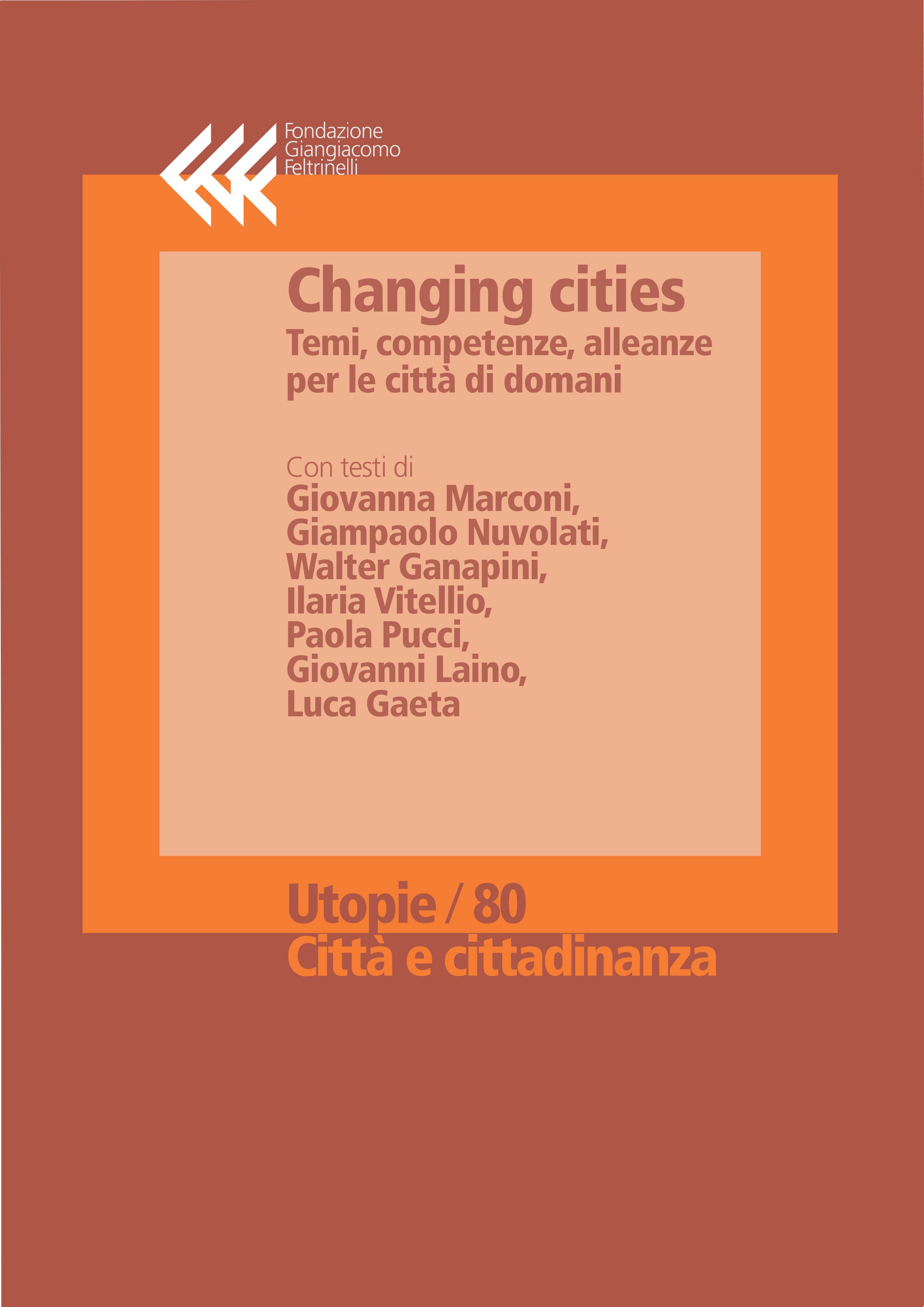Working Group «Territorial cohesion, governance and cooperation among territories» – organized in the framework of the project Agenda Partecipata dei Territori funded by EU Commission – had two moments of research spilled into the two days of the FeltrinelliCamp “Broken Cities”. On Friday, the team worked on the analysis of territorial cohesion issues through a list of case-studies, achieving the realization of a conceptual framework which had been fundamental for the definition of the final proposal elaborated on Saturday.
This Working Group started its analysis based on the identification of the main aspects for creating a model of cohesion intervention. After a discussion among all the participants we highlighted as crucial aspects to address in the model: bottom-up approach, private-public partnership, vertical vs horizontal approach, co-development of policies, competition vs collaboration among territories, mutual agreements, integrated approach (not dividing policies in terms of sectors), eligibility criteria, tools, lack of representation, accountability.After this first brainstorming activity, President of the table Niccolò Donati presented the Agenda Partecipata dei Territori project (Cohesion Policies in the Lombardy Region), and the results of a European Commission funded survey conducted by Fondazione Giangiacomo Feltrinelli focusing on territorial cohesion. The starting point of this survey was about being aware that relaunching policies for Inner Areas means keeping together rural and urban dimensions in every phase of the policy cycle, starting with the decision-making. In other words, Inner Areas will grow again if they will be connected to real virtuous circles of development that do not conceptualize territories as isolated units competing among themselves, but as entities that cooperates to achieve common objectives that can benefit each of them. The objectives of this survey are: verifying the general knowledge of citizens about cohesion projects, the perception of local problems, identifying strategic preferences related to concrete policy measures.
Subsequently, Gabriele Pasqui presented a cooperation project designed by Politecnico di Milano and Lombardy Region for the EU structural funds 2021-2027 with the idea of distributing resources to support several actions aimed at assisting fragile citizens. Through an interaction with all the Municipalities involved, the research group focused its target on the territorialization of services trying to give a cohesion sense of this assignation of resources in order to reinforce multi-level and multi-actor structures. After a public selection, a group of Municipalities started the process of definition of their strategies considering the involvement of local actors and programs for the project implementation, according with the combinate use of material and unmaterial interventions.
Later, Alberto Bortolotti presented AttivAree Valli Resilienti project, a multi-level and multi-actor strategy in Trompia Valley and Sabbia Valley (Brescia Province), areas previously strongly urbanized and industrialized because of the leading manufacturing sector of Northern Italy in 1960s. Valli Resilienti involves a total amount of 25 Municipalities belonging to peripheral territories; a project focused on attracting human and economic resources and knowledge in order to tackle rural and social fragmentation phenomena. The vision of this project is about creating a renewed local identity for the two valleys which is able to set an active and participated community in order to generate a new bridge with the city of Brescia and Garda Lake area.
Parallel to this three case-studies, each member of the working group briefly presented his/her own case-study.
During the second day, the working group debated about the effectiveness of public-based strategies such as Memorandum of Interests among cities or provinces, Regional Pacts or “Accordi di Programma Quadro” (included in SNAI – National Strategy Inner Areas in Italy), highlighted a lack of administrative capacities in order be able to solve development problems and relaunching fragile territories. In particular, the fragmentation of competences among several departments in the same administrative structure which is leader of a strategy does not allow a proper involvement of local and regional actors. So, the Working Group suggested to experiment new models of governance for stimulating coordination through the implementation of existent tools such as “Accordi di Programma Quadro” and, in order to empower this kind of instruments of governance, an important note will be about the creation of a renovate cooperative scenario between central and inner areas. So, the achievement of a common ground of interest among great cities,middle and small cities, fragile areas and peripheries will be determinant for setting a new territorial agenda designed trough a more collaborative approach.
Based on these considerations, working group’s proposal is about the implementation of trans-scalar cohesion instruments which would be to integrate and empowering local skills together with knowledge and economic resources delivered from national or regional entities.
So, in the next few years, we will need local development strategies that are not just bottom-up or top-down, but more collaborative and integrated as well.
Fostering collaboration among different territories through new models of governance can improve the effectiveness of such strategies and finally make a dent in the economic divergence that characterizes center-periphery within accelerated globalization. The capacity to attract consensus will be integral to the policy effectiveness as well as identifying the optimal governance of such strategies for defining an administrative approach which is able to combine skills and democratic participation.
Why is it important
The last 40 years of cohesion policies did not manage to reduce territorial inequalities; in this regard, we consider the endogenous development paradigm to be not satisfactory in reaching the goal of territorial cohesion; endogenous development tends to ‘treat’ territories in isolation, with the implicit aim of making the territories competitive on the market. Cohesion policies fail in reaching the correct functional scale to address many policy issues, such as those related to the environmental governance of public goods.
The proposal: participatory cohesion agreements
The participatory cohesion agreements aim at reaching the optimal functional scale for territorial policies, by creating scalable territorial coalitions among stakeholders and local institutions. The main concern of our working group was to ensure that this governance arena would be a) democratically legitimized and b) produces policies that would ensure environmental and social fairness, or that at least do not damage environmental or social groups. The arrangement is based on three phases:
-
- Proposal phase; the regional level starts this phase, by creating a committee composed by scientists and members of civil society; this committee produces a proposal of intervention on a single issue and identifies the functional scale where to apply the intervention; based on this, they also identify the relevant actors that must be involved in the process (social classes, stakeholders & so on). The committee will also identify possible eco-social trade-offs involved in the proposal and identify possible compensation for the people/social groups that can be damaged by the proposal.
- Decision phase; the local institutions’ administrators and the stakeholders identified by the committee deliberates on the proposal, making amendments that are deemed necessary.
- Voting phase; since the local communities’ jurisdictions and the functional scale of the participatory cohesion agreements do not coincide, there will be the possibility to hold local referendums.
Broken Cities | Scroll up









